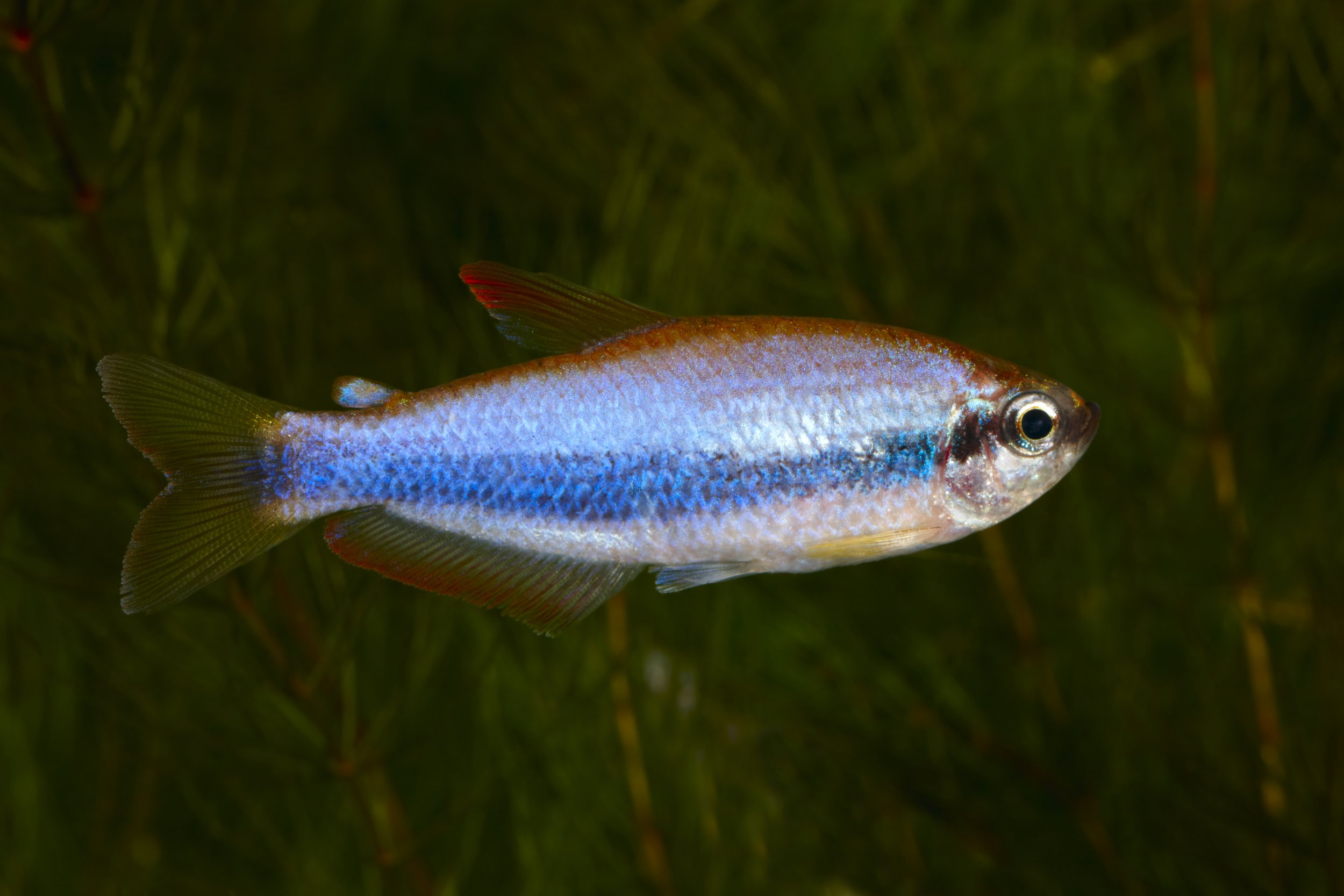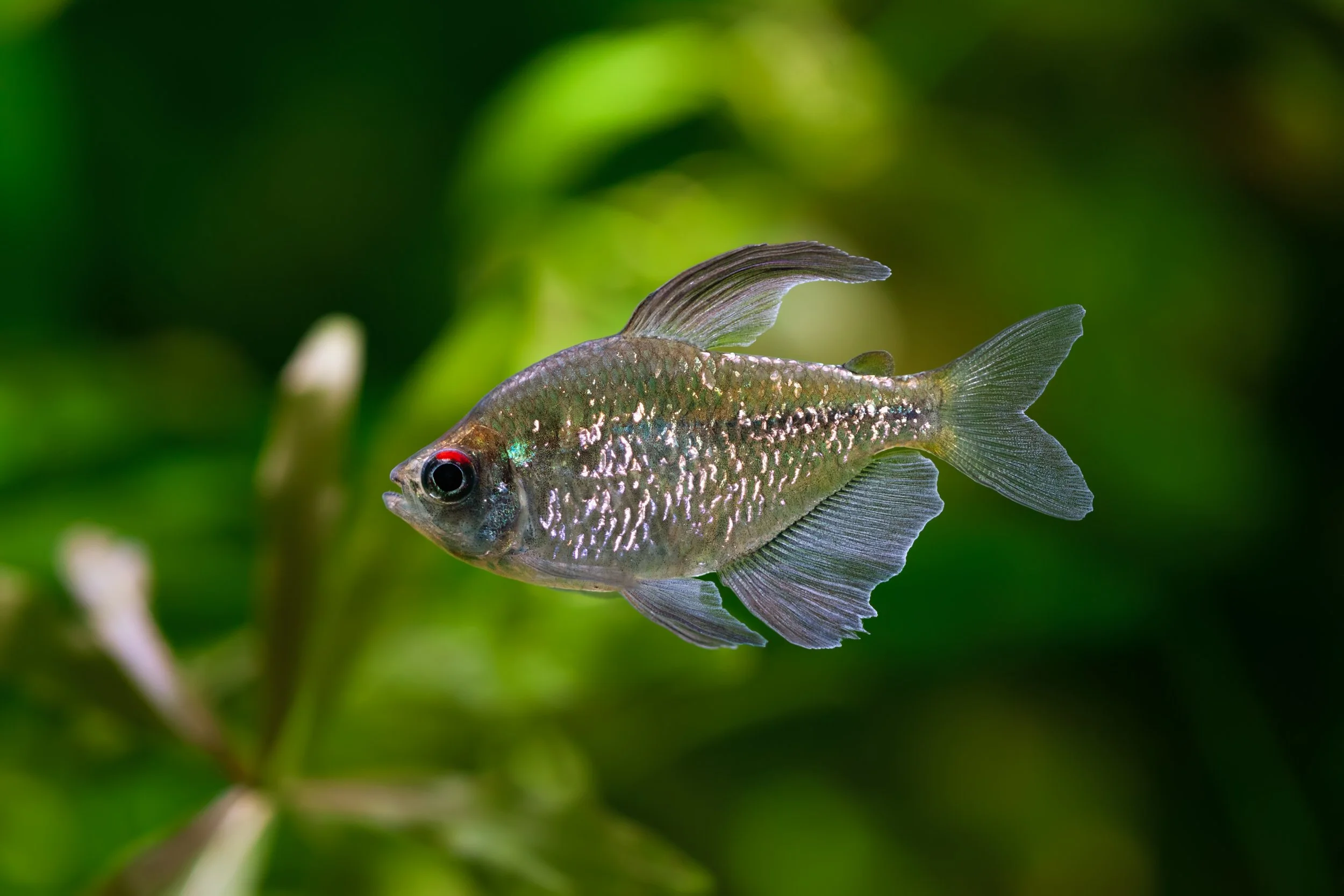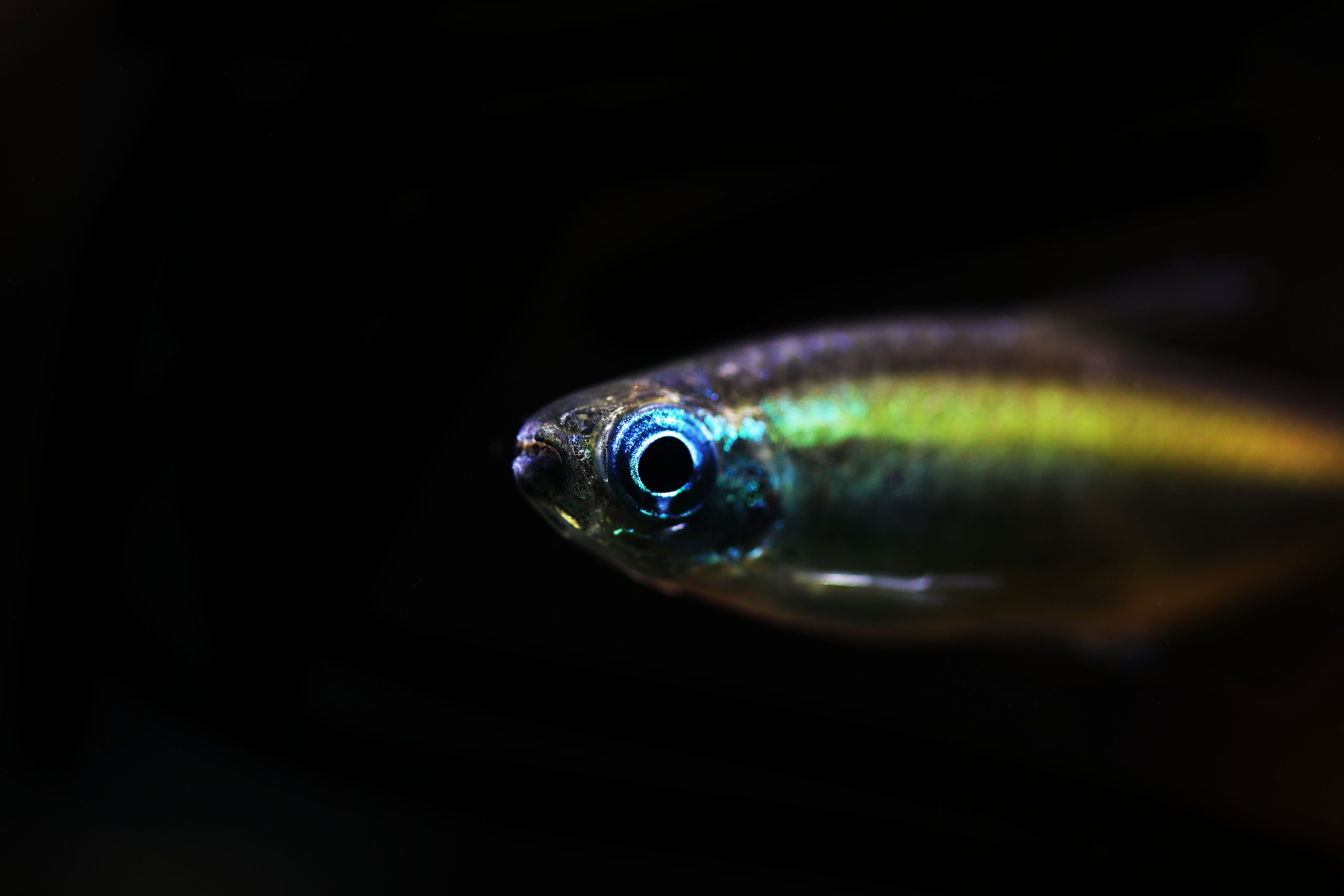Kerri Tetra
The Kerri Tetra, scientifically known as Inpaichthys kerri, is a peaceful freshwater fish species native to the upper Rio Negro in Brazil. These tetras inhabit slow-moving waters, particularly blackwater environments, characterized by acidic and soft water conditions.
Physically, the Kerri Tetra is recognized for its slender body and distinctive coloration. It has a silver to gold body with a black stripe running horizontally from the snout to the caudal fin. This stripe is accentuated by a vibrant blue line above it, adding to its visual appeal. They typically reach a size of around 1.5 to 2 inches (3.8-5 cm).
In their natural habitat, Kerri Tetras thrive in well-planted aquariums with areas for swimming and hiding spots provided by plants and driftwood. They prefer soft and acidic water conditions, mimicking their native blackwater habitats. Maintaining a stable and clean environment with proper filtration contributes to their overall well-being.
Known for their peaceful nature, Kerri Tetras are suitable for community aquariums. They are social and should be kept in groups to promote natural behavior and reduce stress. A well-balanced diet, including high-quality flakes, pellets, and occasional live or frozen foods, meets their nutritional needs.
Maintaining water conditions within the range of 75-82°F (24-28°C) and a pH level between 5.0 to 7.0 is advisable. Regular water changes and proper filtration contribute to their health and vitality.
Breeding Kerri Tetras in captivity is achievable. Creating a separate breeding tank with soft, acidic water and fine-leaved plants for egg deposition encourages successful spawning. After spawning, it's recommended to remove the adults to prevent them from consuming the eggs.
In summary, the Kerri Tetra is a visually appealing and peaceful addition to freshwater aquariums, known for its distinctive coloration and suitability for community setups. Recreating their natural habitat from the upper Rio Negro and adhering to proper care conditions contribute to their well-being in captivity.
The Kerri Tetra, scientifically known as Inpaichthys kerri, is a peaceful freshwater fish species native to the upper Rio Negro in Brazil. These tetras inhabit slow-moving waters, particularly blackwater environments, characterized by acidic and soft water conditions.
Physically, the Kerri Tetra is recognized for its slender body and distinctive coloration. It has a silver to gold body with a black stripe running horizontally from the snout to the caudal fin. This stripe is accentuated by a vibrant blue line above it, adding to its visual appeal. They typically reach a size of around 1.5 to 2 inches (3.8-5 cm).
In their natural habitat, Kerri Tetras thrive in well-planted aquariums with areas for swimming and hiding spots provided by plants and driftwood. They prefer soft and acidic water conditions, mimicking their native blackwater habitats. Maintaining a stable and clean environment with proper filtration contributes to their overall well-being.
Known for their peaceful nature, Kerri Tetras are suitable for community aquariums. They are social and should be kept in groups to promote natural behavior and reduce stress. A well-balanced diet, including high-quality flakes, pellets, and occasional live or frozen foods, meets their nutritional needs.
Maintaining water conditions within the range of 75-82°F (24-28°C) and a pH level between 5.0 to 7.0 is advisable. Regular water changes and proper filtration contribute to their health and vitality.
Breeding Kerri Tetras in captivity is achievable. Creating a separate breeding tank with soft, acidic water and fine-leaved plants for egg deposition encourages successful spawning. After spawning, it's recommended to remove the adults to prevent them from consuming the eggs.
In summary, the Kerri Tetra is a visually appealing and peaceful addition to freshwater aquariums, known for its distinctive coloration and suitability for community setups. Recreating their natural habitat from the upper Rio Negro and adhering to proper care conditions contribute to their well-being in captivity.
The Kerri Tetra, scientifically known as Inpaichthys kerri, is a peaceful freshwater fish species native to the upper Rio Negro in Brazil. These tetras inhabit slow-moving waters, particularly blackwater environments, characterized by acidic and soft water conditions.
Physically, the Kerri Tetra is recognized for its slender body and distinctive coloration. It has a silver to gold body with a black stripe running horizontally from the snout to the caudal fin. This stripe is accentuated by a vibrant blue line above it, adding to its visual appeal. They typically reach a size of around 1.5 to 2 inches (3.8-5 cm).
In their natural habitat, Kerri Tetras thrive in well-planted aquariums with areas for swimming and hiding spots provided by plants and driftwood. They prefer soft and acidic water conditions, mimicking their native blackwater habitats. Maintaining a stable and clean environment with proper filtration contributes to their overall well-being.
Known for their peaceful nature, Kerri Tetras are suitable for community aquariums. They are social and should be kept in groups to promote natural behavior and reduce stress. A well-balanced diet, including high-quality flakes, pellets, and occasional live or frozen foods, meets their nutritional needs.
Maintaining water conditions within the range of 75-82°F (24-28°C) and a pH level between 5.0 to 7.0 is advisable. Regular water changes and proper filtration contribute to their health and vitality.
Breeding Kerri Tetras in captivity is achievable. Creating a separate breeding tank with soft, acidic water and fine-leaved plants for egg deposition encourages successful spawning. After spawning, it's recommended to remove the adults to prevent them from consuming the eggs.
In summary, the Kerri Tetra is a visually appealing and peaceful addition to freshwater aquariums, known for its distinctive coloration and suitability for community setups. Recreating their natural habitat from the upper Rio Negro and adhering to proper care conditions contribute to their well-being in captivity.






